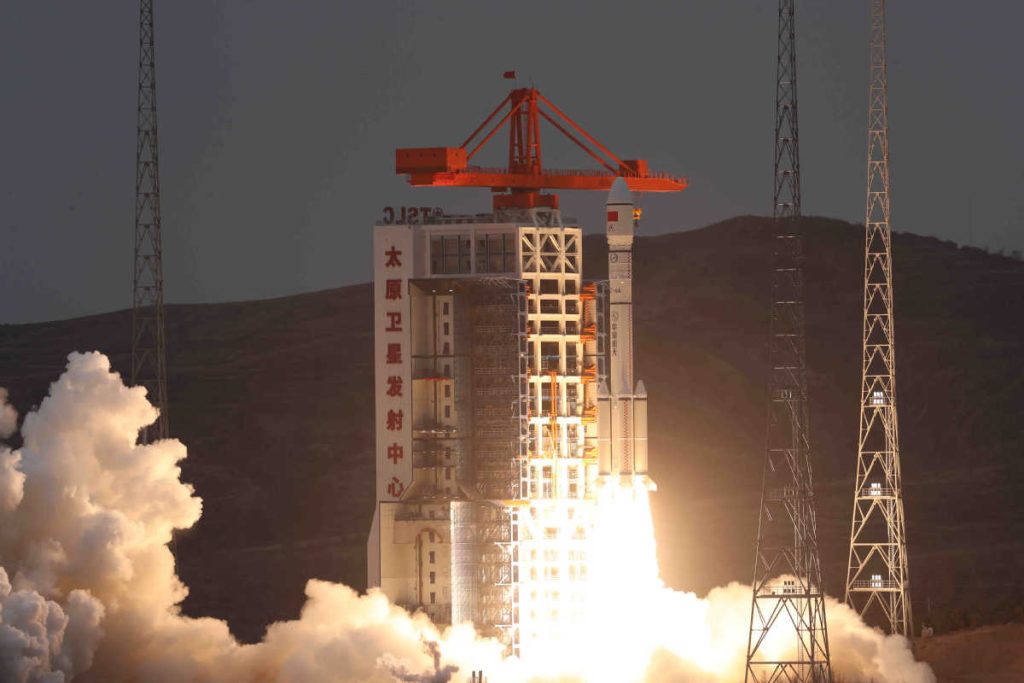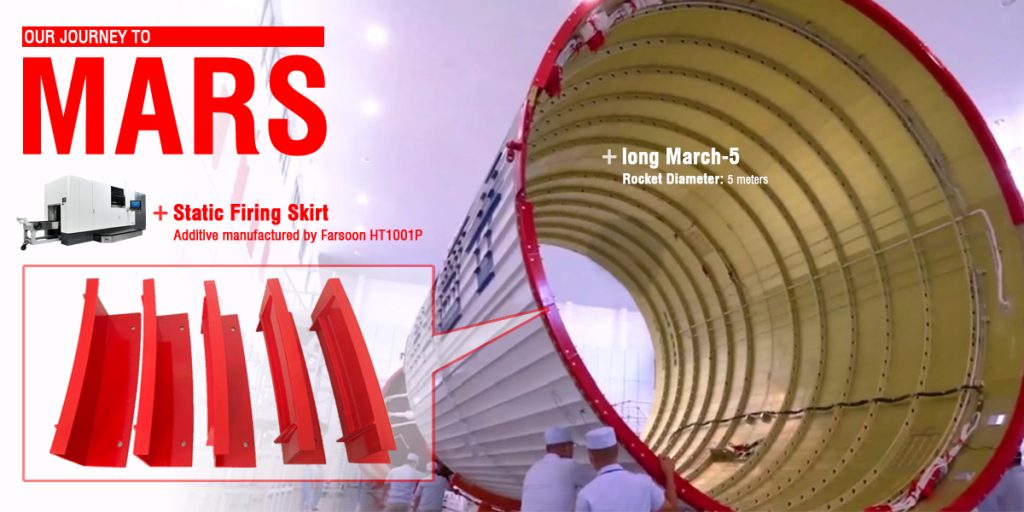China has announced the successful launch of its new Chang Zheng 6A (Long March 6A) rocket for the first time, which lifted off from a new launch pad at the Taiyuan Satellite Launch Center (TSLC) earlier this week.
Launched by the China Aerospace Science and Technology Corporation, the vehicle’s debut mission was to carry the country’s Pujiang-2 and Tiankun-2 satellites into sun-synchronous orbit (SSO). This is the second Pujiang satellite to be launched by China, with the first hitching a ride on a Long March 11 back in late 2015.
The first Pujiang marked the first time China used additive manufacturing technology to create a satellite: the titanium skull of the antenna was 3D printed. It’s since been used to monitor population density, track weather patterns, and monitor traffic in cities.
Unlike its predecessor, the new Pujiang-2 will be used for scientific research and land and resources surveillance purposes. Like many Chinese satellites, details about the Pujiang-2 are scarce but it’s likely that it also features 3D printed components (although this isn’t confirmed). We do know that the satellite is able to communicate with other satellites in low-Earth orbit, but it’s not yet clear if it will communicate with the first Pujiang.

China’s Long March 6A
Based on the previously developed Long March 6, the Long March 6A is a two-stage rocket. It’s both larger and more powerful than the original Long March 6, capable of lifting payloads up to five tons into orbit. The 6A stands 50 meters tall, sports a core diameter of 3.35 meters, and weighs in at 530,000kg at liftoff.
Interestingly, the launch vehicle is China’s first carrier rocket to be equipped with solid-fuel strap-on boosters. Specifically, the Long March 6A comprises a center core, four side solid rocket boosters, and a second stage. When combined, the two main engines and four boosters provide a total of 7,204 kN of thrust, leveraging non-toxic and non-polluting propellants.
This may be the 6A’s maiden flight, but China has already completed a total of 412 flights using its Long March lineup of rockets. In fact, it was revealed that the Long March 5 carrier rocket launched in August 2020 featured a set of polymer static firing skirts 3D printed on a Farsoon HT1001P 3D printer. The 3D printed firing skirts were absolutely crucial to the separation process, making up a part of the cylindrical inter-stage structure that lined the 15.7m circumference of the rocket.
The Long March range also made headlines in the additive manufacturing sphere when a Long March 5B was used to launch a space 3D printer developed by the China Academy of Space Technology (CAST) and a 3D printed CubeSat deployer two years ago. The mission allowed China to complete its first set of 3D printing tests in the microgravity of space.

Additive manufacturing for aerospace
Since leveraging 3D printing for the original Pujiang satellite, China has certainly gained an appreciation for the benefits of the technology in the aerospace sector. In a field where material and weight savings are so crucial, the design freedom offered by additive manufacturing can do wonders when it comes to geometric part optimization, ultimately allowing for lighter payloads and less fuel consumption.
Just this month, defense giant Lockheed Martin’s Space unit selected electronics firms SWISSto12 and CAES (Cobham Advanced Electronic Solutions) to 3D print phased array antennas for its future satellite missions. Phased array antennas are collections of antennas that have the unique ability to change both the shape and direction of the emitted radiation pattern without actually moving the antenna itself.
Elsewhere, X-Bow Launch Systems, a space technology 3D printing company, exited stealth mode last week. Originally founded in 2016, the New Mexico-headquartered startup specializes in the development of 3D printed solid fuels and rocket motors and has already created a lineup of small launch vehicles suitable for both orbital and suborbital launches.
Subscribe to the 3D Printing Industry newsletter for the latest news in additive manufacturing. You can also stay connected by following us on Twitter, liking us on Facebook, and tuning into the 3D Printing Industry YouTube Channel.
Looking for a career in additive manufacturing? Visit 3D Printing Jobs for a selection of roles in the industry.
Featured image shows the Long March 6A carrier rocket lifting off from the Taiyuan Satellite Launch Center. Photo via Zheng Taotao.


